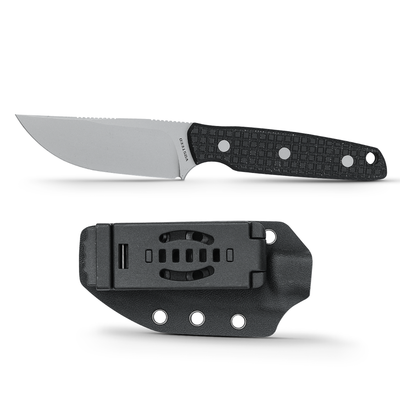Unlocking the Mystique: Discover the Allure and Craftsmanship of Damascus Fixed Blade Knives!
Damascus fixed blade knives are more than just tools; they are a fusion of artistry, history, and functionality. The mesmerizing patterns on their blades tell a story of ancient craftsmanship that has fascinated knife enthusiasts and collectors alike. As these knives gain popularity in the modern world, their unique beauty and exceptional performance have captured the attention of hobbyists and professionals. Whether for practical use in the kitchen, outdoor adventures, or as part of a collection, the allure of a Damascus fixed blade knife is undeniable. This article delves into the features, history, and manufacturing processes that make these knives so special.

The Features of Damascus Fixed Blade Knives
One of the most striking aspects of Damascus fixed blade knives is their distinctive patterns, often resembling flowing water or intricate designs. These patterns are a result of the unique manufacturing process that combines different types of steel, creating layers that are folded and forged together. The result is a blade that not only looks stunning but is also incredibly strong and durable. The use of high-carbon steel in the creation of these knives gives them exceptional sharpness and edge retention, making them ideal for various purposes—from culinary tasks to outdoor survival. Moreover, the tactile feel and balance of a Damascus knife enhance the user experience, providing a sense of connection to the craftsmanship behind it. Friends who are avid cooks often share how using a Damascus knife elevates their culinary experience, making food preparation feel like an art form.
A Brief History of Damascus Steel
The origins of Damascus steel date back to the Middle Ages, when it was first used in the creation of blades in the Near East. This ancient material was renowned for its ability to hold a sharp edge while being resistant to shattering. The manufacturing techniques were closely guarded secrets, passed down through generations of skilled artisans. Over time, Damascus steel became synonymous with quality and craftsmanship, used in swords and knives that were not only functional but also beautiful. The name "Damascus" itself is derived from the city of Damascus in Syria, which was a major trading hub for steel and weaponry. As the techniques traveled through cultures—from the Byzantine Empire to India—Damascus steel became a symbol of prestige and power. It’s fascinating to think how a blade might have once been held by a historic figure, and this connection to the past adds to the appeal for collectors today.
The Manufacturing Process of Damascus Fixed Blade Knives
The creation of a Damascus fixed blade knife is a meticulous process that requires both artistry and technical skill. It begins with the selection of high-quality steels, typically a combination of high-carbon and low-carbon steels. These steels are layered and forge-welded together to create a billet. The forging process involves heating the steel to a high temperature and then hammering it to fuse the layers, which is where the characteristic patterns begin to form. The blade is then shaped and ground, followed by heat treatment to enhance its hardness and durability. This entire process is not only labor-intensive but also requires a deep understanding of metallurgy and craftsmanship. Friends who have dabbled in knife-making often speak of the thrill and satisfaction that comes from creating a blade from scratch, transforming raw materials into a functional piece of art.
Techniques and Tools Used
Manufacturing a Damascus fixed blade knife employs various techniques and tools that are critical to achieving the desired results. Pattern welding is one of the most important methods used in creating the layered steel. This involves repeatedly folding and welding the steel to develop intricate patterns. Additionally, heat treatment is crucial as it affects the hardness and flexibility of the blade. Tools such as anvils, hammers, and grinders play significant roles throughout the crafting process, allowing artisans to shape and refine their work accurately. The blend of traditional and modern techniques ensures that each knife is unique, with its own story and character.
Celebrating the Craftsmanship of Damascus Knives
In summary, Damascus fixed blade knives are a celebration of both beauty and functionality. Their unique features, rich historical significance, and the artistry involved in their manufacturing make them a coveted item for collectors and enthusiasts. Each knife encapsulates centuries of tradition and skilled craftsmanship, inviting appreciation not just for their utility but also for their aesthetic qualities. As you consider adding a Damascus knife to your collection, remember that it is not just a tool; it is a piece of art and history, waiting to be appreciated for generations to come.






Comentarios